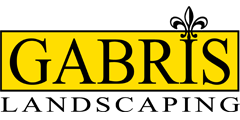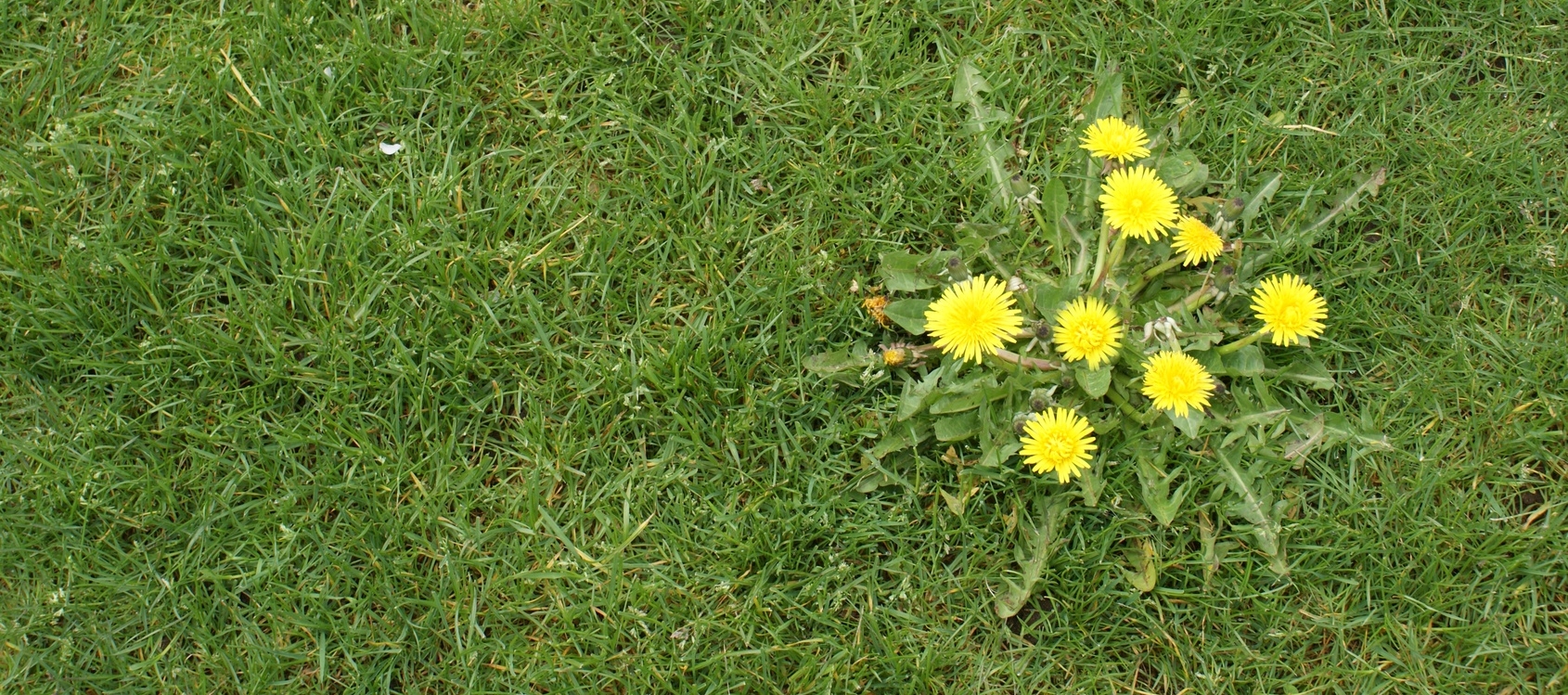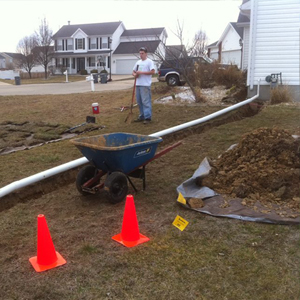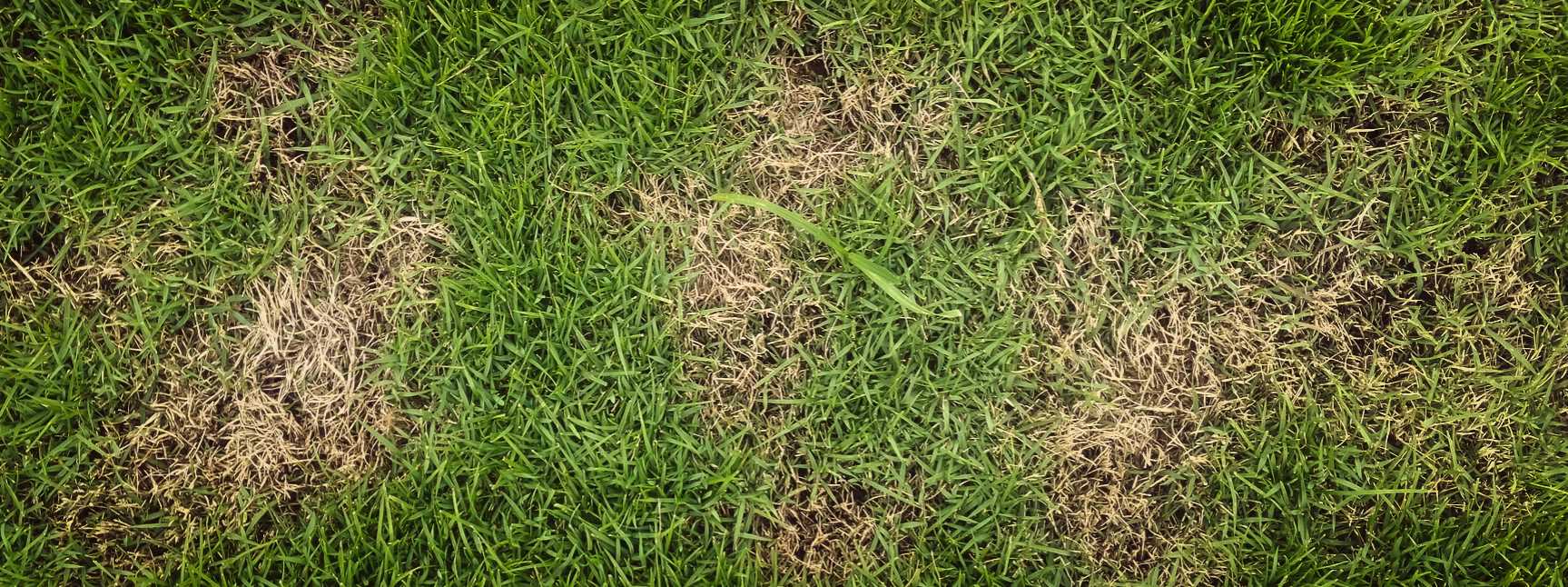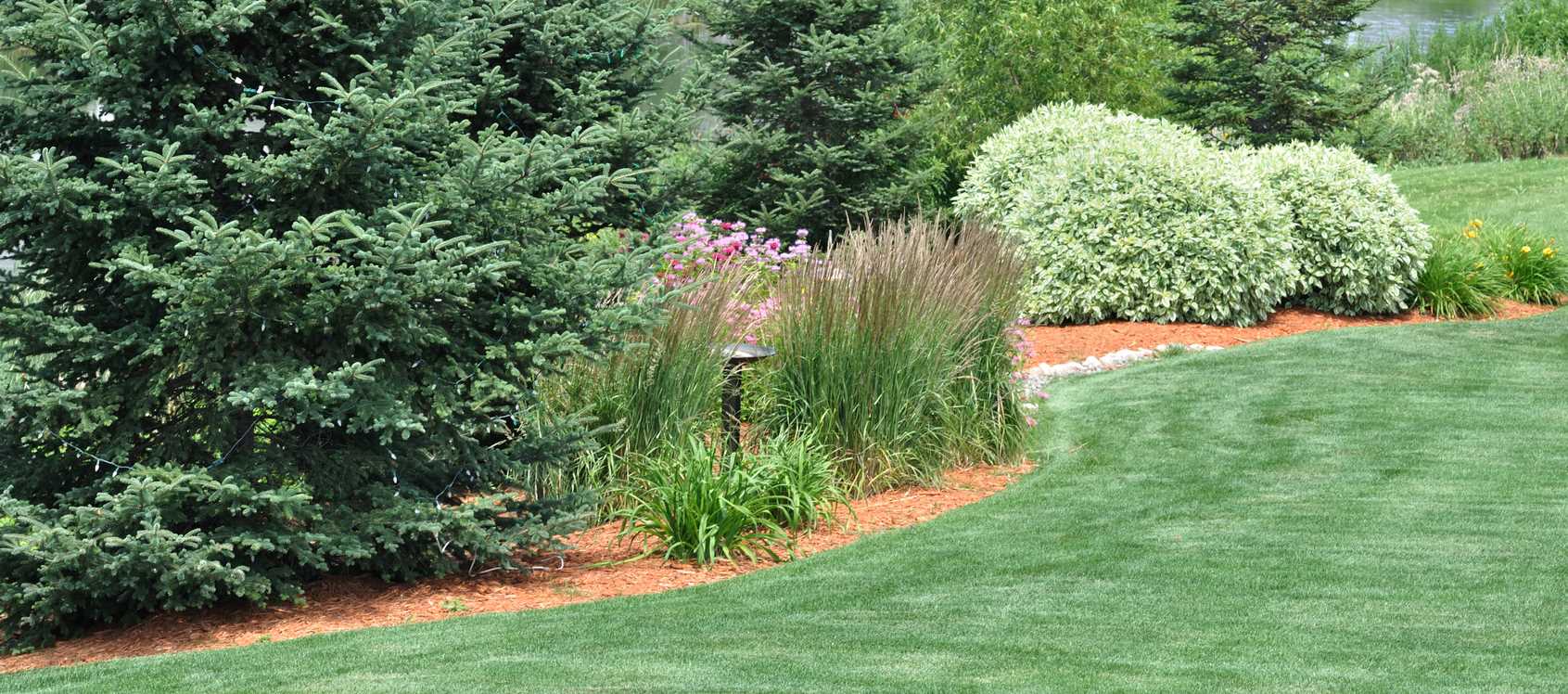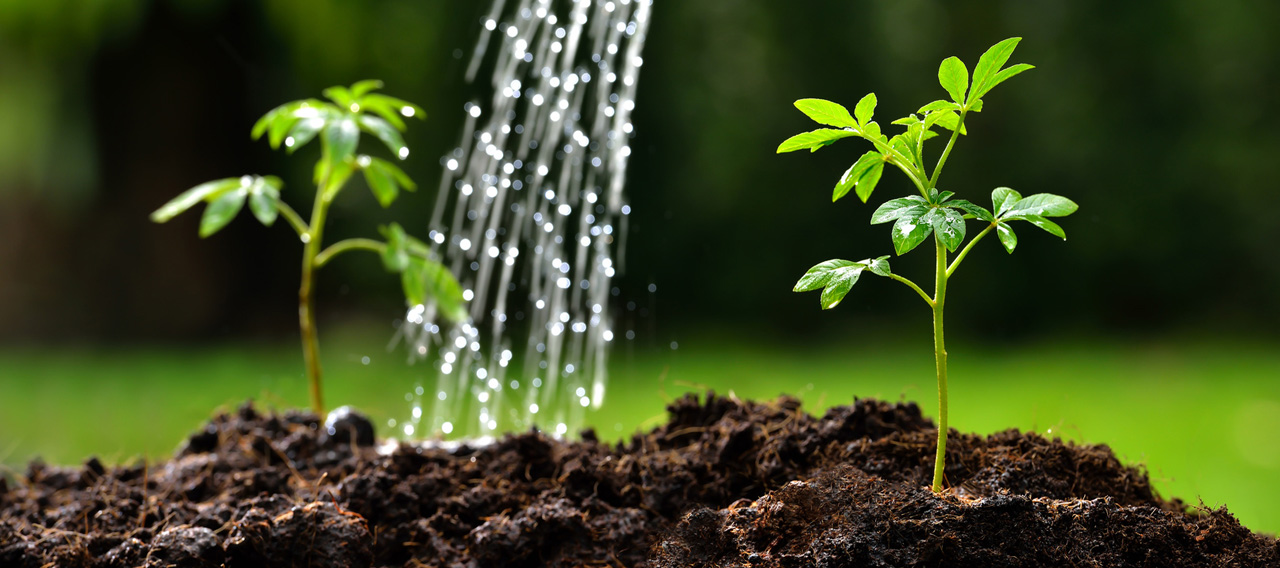The Science of Planting Trees
Click Here To Download The Science of Planting Trees
The Science of Planting Trees
The Science of Planting Trees
Tree root systems are shallow and wide-spreading. Based on nursery standards, a field-grown balled and burlapped (B&B) tree or container-grown tree has less than 5-20% of the fine absorbing roots of the same size tree in a landscape setting. This creates stress when the tree moves from the daily care in the nursery setting to the landscape. The goal of the science of planting trees is promoting rapid root growth to reduce the water stress imposed by the limited root system. Post-planting stress (transplant shock) describes the stress factors induced by the limited root system
Steps to Planting Container-Grown or Field-Grown B&B Nursery Stock
Note: Call before you dig. Whether you plan on planting the tree yourself or hiring the work done, the site needs to have underground utilities marked before digging to plant a tree. In Colorado, this is easy to do by calling the Utility Notification Center of Colorado at 1-800-922-1987 or 8-1-1.) It can also be done online at colorado811.org. The utilities will be marketed within 72 business hours, so plan ahead.
Step 1. Determine Depth of the Planting Hole
Planting trees too deep has become an epidemic leading to the decline and death of landscape trees. Trunk-girdling roots, caused by planting too deep, leads to more deaths of landscape trees than all other factors combined!
Trunk-girdling roots develop when a tree is planted too deep in the root ball and/or the root ball is planted too deep in the planting hole. Trunk-girdling roots may lead to decline and death some 12 to 20 years after planting. Trunk-girdling roots may be below ground.
To deal with this epidemic an industry-wide working group developed the following standards1 for tree planting depth:
These standards have been adopted industry-wide, including endorsement by the American Nursery and Landscape Association (ANLA), American Society of Consulting Arborists (ASCA), American Society of Landscape Architects (ASLA), Associated Landscape Contractors of America (ALCA), International Society of Arboriculture (ISA), and Tree Care Industry Association (TCIA).
Depth of Root Ball in Planting Hole
In tree planting, the root ball sits on undug soil. This prevents the tree from sinking and tilting as the soil settles. If the hole is dug too deep, backfill and firm the soil on the bottom to the correct depth. (Roots grow out from the root ball, not down.)
To deal with the soil texture interface (actually the differences in soil pore space) between the root-ball soil and backfill soil, it is imperative that the root ball rises slightly above grade with no backfill soil over top of the root ball. For small (one-inch caliper) trees, the top of the root ball rises one inch above grade. For larger (two to four inch caliper) trees, the top of the root ball rises about two inches above grade. Backfill soil should cover the “knees” tapering down to grade.
If backfill covers the root ball, water and air will be slow to cross the texture interface. In this situation, water tends to move around the root ball and is slow to soak into the root ball. Root health will be compromised by lower soil oxygen levels.
Depth of root ball in planting hole – Top of root ball rises 1-2 inches above soil grade. No soil is placed over top of the root ball. Backfill soil covers the “knees” tapering downward to the original soil grade. Rootball sits on un-dug/firmed soil to prevent sinking.
It is imperative that the root ball comes to the surface, with no backfill on top of the root ball. When backfill soil is placed over top of the root ball, the soil texture interface impedes water and air movement into the root ball.
Depth of Tree in the Root Ball
- Generally, at least two structural roots should be within the top one to three inches of the root ball, measured three to four inches from the trunk.
- On species prone to trunk-circling roots (crabapples, green ash, hackberry, little leaf linden, poplar, red maple, and other species with aggressive root systems), the top structural root should be within the top one inch of the root ball.
Checking Depth of Tree in Root Ball
Check the depth of the tree in the root ball. Do not assume that it was planted correctly at the nursery.
- The presence of the root flare is an indication of good planting depth. However, small trees may have minimal root flare development, making it difficult to determine. Be careful not to mistake swelling of the trunk below the graft as the root flare.
- A good way to evaluate planting depth in the root ball is with a slender implement like a slender screwdriver, knitting needle, or barbeque skewer. Systematically probe the rootball three to four inches out from the trunk to locate structural roots and determine their depth.
Systematically probe the root ball with a slender screwdriver. Generally, at least two structural roots should be found in the top 1-3 inches of soil, 3-4 inches out from the trunk. On species prone to trunk circling roots (crabapples, green ash, hackberry, little leaf linden, poplar, red maple, and other species with aggressive root systems), the top structural root should be within the top one inch of the root ball.
If the tree is planted too deep in the root ball, excess soil should be removed from the top in the backfill step of the planting process. Adjust the depth of the planting hole to compensate.
With trees planted too deep in the root ball, a better option is to not purchase the trees. In the root ball, the soil above the root flare generally does not contain roots so the total volume of roots may be too small to maintain tree health. In container-grown stock, trees planted too deep readily develop trunk-circling roots.
Another issue with soil levels above the root flare is rootball size. With roots only in a portion of the root ball area, the root ball may be too small for the tree to thrive following planting.
Summary: Depth of Planting Hole
Depth of the planting hole should be 1-2 inches less than the height of the root ball, adjusted (as needed) to correct the depth of the tree in the root ball.
For example, if a two-inch caliper tree has a root ball height of 16 inches, depth of the planting hole would be 14 inches. However, if the top structural roots are located five inches down in the root ball, between two to four inches of soil needs to be removed from the root ball in the backfill process. Depth of the planting hole would be adjusted to 10-12 inches
In digging, measure the depth of the planting hole with a straight board (like rake handle) and a measuring tape.
Checking depth of root ball in planting hole with a straight board (like a rake handle).
Step 2. Dig Saucer-Shaped Planting Hole Three-Times Root Ball Diameter
Saucer-Shaped Planting Hole
To support rapid root regeneration, research suggests a wide, saucer-shaped planting hole. If the roots have difficulty penetrating compacted site soil (due to low soil oxygen levels), sloped sides direct roots upward and outward toward the higher oxygen soil near the surface rather than being trapped in the planting hole. Roots that do not penetrate the site soil may begin circling in the hole, leading to trunk-girdling roots.
When roots cannot penetrate the site soil (due to low oxygen levels), the saucer-shaped planting hole directs the roots upward and outward into soils with higher oxygen levels.
Water logging concerns – The saucer-shaped planting hole actually gives the tree a larger margin for error in over watering. In the saucer-shaped planting hole, three times the root ball diameter, the upper half contains 85% of the back fill soil, and the upper quarter contains 75% of the back fill soil. Water could saturate the lower 3/4 of the back fill soil and only affect 25% of the root system!
When the planting hole is dug with an auger, cut down the sides with a shovel to help eliminate the glazing and create the preferred sloping sides. An alternative is to rototill a 12-24″ inch ring of soil around the planting hole after planting.
When dug with an auger, cut down the sides into the saucer shape during backfill process.
Planting Hole Depth
Depth of the planting hole is determined in Step 1. To measure depth of the dug hole, place a straight board or shovel handle across the hole and measure from the board/handle height to the bottom of the hole.
For stability, it is imperative that the root ball sits on undug soil. If the hole is dug too deep, backfill and firmly pack the soil to the correct depth. Remember that the planting hole is shallow and wide. As a point of clarification, primary growth of roots is outward, not downward.
Planting Hole Width
Planting hole width is the key to promoting rapid root growth, reducing post-planting stress. In soils with great tilth (conditions supportive to ideal root growth), width is probably not a minor concern. However, in a compacted clayey soil, typical of much of Colorado, root growth slows when roots reach the undisturbed site soil beyond the backfill area. This is due to lower soil oxygen levels in the undisturbed soil.
Twenty-five percent wider – A planting hole with vertical sides that is only twenty-five percent wider than the root ball hinders root growth. If the soil is compacted and difficult to penetrate, the roots circle inside the hole just as if the root system were in a container. Size of the root system (before growth is slowed by the lower oxygen levels of the site soil) is insufficient to reduce post-planting stress. Narrow planting holes are sometimes used as a labor saving technique. However, on less than idea soils, it will slow root establishment and may predispose the roots to circling.
Two times root ball – A saucer-shaped planting hole twice the diameter of the root ball will allow the root system to grow rapidly to 150% of the root ball size before growth is slowed by the lower oxygen levels of the site soil. This is not enough to avoid post-planting stress under normal conditions. A planting hole two times root ball diameter is common in commercial plantings as a labor savings technique. However, on less than idea soils, it may slow root establishment.
Three times root ball – A saucer-shaped planting hole three times the diameter of the root ball allows the root system to grow rapidly to 400% of the root ball size before being slowed by the lower oxygen levels of the site soil. This is enough to reduce post-planting stress under normal conditions. For example, a two-inch diameter tree with a 24 inch (two foot) wide root ball needs a 72 inch (six foot) wide saucer-shaped planting hole. To promote root growth, the planting hole is wide, shallow, and saucer-shaped!
The shallow but wide planting hole is the primary technique for encouraging rapid root growth, which is the objective in the science of planting trees. This is an important change in the mindset of many folks who have been planting into a narrow, deep hole.
Summary: Planting Hole Specification
Generally, at least two structural roots should be found in the top 1-3 inches of soil, 3-4 inches out from the trunk. On species prone to trunk circling roots (such as crab apples, green ash, hack berry, little leaf linden, poplar, and red maple), the top structural root should be within the top one inch of the root ball.
Modification for Wet Soils
On wet soils, raise planting depth so that one-third of the root ball is above grade. Cover root ball “knees” with soil, gradually tapering down to grade. Do not use mulch to cover knees, as roots will readily grow in moist mulch but will be killed when the mulch dries out.
Modification for Compacted Soils
On extremely compacted soils, rototilling a ring around the back fill area to a width of four, five, or more times the root ball diameter may be helpful. This should be done after planting is completed so the soil is not compacted by foot traffic during the planting process.
Planting on a Slope
When planting on a slope, plant “out-of-the-hill” by adjusting the grade around the planting hole as illustrated in .
Labor-Saving Techniques
A labor-saving technique is to dig the hole twice the root ball width with more- vertical sides. Place the tree in the hole, firm a ring of soil around the base of the root ball to stabilize it, remove wrappings, and check for circling roots. Then with a shovel cut the sides of the planting hole to form the saucer-shaped planting hole three times the root ball diameter. With this technique, part of the backfill soil does not have to be removed and shoveled back, but simply allowed to fall into the hole. Soil “peds” (dirt clods) up to the size of a small fist are acceptable. With this technique, it is not practical to mix in soil amendments, as amendments must be thoroughly mixed throughout the back fill soil.
A small tiller or “garden weeder” makes for quick digging. Simply place the tiller where the hole will be and walk around in a circle. Stop periodically to remove the loosened soil from the hole, and continue walking and tilling in a circle.
Step 3. Set Tree in Place, Removing Container/Wrappings
In setting the tree in the planting hole, if the tree has a “dogleg” (a slight curve in the trunk just above the graft) the inside curve must face north to reduce w inter bark injury.
Vertically align the tree with the top centered above the root ball. Due to curves along the trunk, the trunk may not necessarily look straight. It will appear straighter with growth.
In this step, techniques vary for container-grown trees and B&B trees.
Container-Grown Nursery Stock
“Container-grown” nursery stock refers to trees and shrubs grown in containers using a variety of production methods. Spread of the root system is limited to the container size. An advantage of container stock is that it can be planted in spring, summer, or fall. Smaller trees and shrubs are commonly grown in containers.
There are many variations of container production. In many systems, like “pot-in-pot” and “grow-bags,” the container is in the ground. This protects roots from extreme heat and cold and prevents trees from blowing over.
In container-grown nursery stock, circling roots develop over time. These may be on the outside of the root ball (particularly at the bottom of the container) or just inside the root ball and not visible from the surface. Current research finds that the old standard of slitting the root ball on four sides does not adequately deal with circling roots. New standards call for the outer 1-1½ inch of the root ball to be shaved off with a knife, saw, or pruners in the planting process. This encourages roots to grow outward and does not affect tree growth potential.
Techniques with Container-Grown Stock
Actual planting techniques in this step vary with the type of container and extent of root development. Generic steps include:
a) Lay the tree on its side in or near the planting hole.
b) Wiggle off or cut off the container.
c) Shave off the outer 1-1 ½ inch of the root ball with a knife, saw, or pruners. This step is important to deal with circling roots.
d) Tilt the tree into place. Remember that the inside curve of any dogleg faces north.
e) Check depth of the root ball in the planting hole. If incorrect, remove the tree and correct the depth, firming any soil added back to the hole.
f) Align vertically.
g) Firm a shallow ring of soil around the bottomof the root ball to stabilize it.
- The ideal container-grown tree has a nice network of roots holding the root ball together. After the container is removed, the tree is gently tilted into place.
- If some of the soil falls off (often on the bottom), it may be necessary to adjust the depth of the planting hole. Backfill and pack the bottom of the planting hole to the correct depth.
- If most of the soil falls off the roots, the tree is planted as a bare-root tree (see below).
- Fabric grow bags must be removed from the sides. They are generally cut away after setting the tree in place.
- Generally, paper/pulp type containers should be removed. Most are slow to decompose and will complicate soil texture interface issues. Pulp containers often need to be cut off, as they may not slide off readily.
- In handling large trees (3-inch caliper and greater) it may be necessary to set the tree in place before removing the container.
- If the container is easy to cut, it may help to keep the root ball intact by first cutting off the bottom of the container, carefully setting the tree in place and tilting to align vertically, then cutting a slit down the side to remove the container.
If the container is easy to cut, many planters prefer to first cut off the bottom, then move the tree in place (helps hold root ball together) and then slit the container side to remove it.
Field-Grown, Balled and Burlapped Nursery Stock
Field-grown, balled and burlapped (B&B) trees and shrubs are dug from the growing field with the root ball soil intact. In the harvest process, only 5-20% of the feeder roots are retained in the root ball. B&B nursery stock is best transplanted in the cooler spring or fall season.
To prevent the root ball from breaking, the roots are balled and wrapped with burlap (or other fabrics) and twine (hence the name B&B). In nurseries today, there are many variations to B&B techniques. Some are also wrapped in plastic shrink-wrap, placed in a wire basket, or placed in a pot.
Larger plant materials are often sold as B&B stock. In field production, the roots may be routinely cut to encourage a more compact root ball. While this process improves the transplantability of the tree, it adds to production costs.
Depending on how long the tree has been held in the B&B condition, circling roots may begin to develop. If this has occurred, shave off the outer 1-1½ inches of the root ball as described previously for container-grown trees.
Field-grown, B&B nursery stock needs to have the wrappings that hold the root ball together taken off AFTER the tree is set in place.
Techniques with Balled and Burlapped Nursery Stock
An advantage of the wider planting hole is that it gives room for the planter to remove root ball wrappings AFTER the tree is situated in the hole.
Based on research, standard procedures are to remove root ball wrapping materials (burlap, fabric, grow bags, twine, ties, wire basket, etc.) from the upper 12 inches or 2/3 of the root ball, whichever is greater AFTER the tree is set in place. Materials under the root ball are not a concern since roots grow outward, not downward.
Actual planting techniques in this step vary with the type of wrapping on the root ball. Generic steps include:
a) Remove extra root ball wrapping added for convenience in marketing (like shrink-wrap and a container). However, do NOT remove the burlap (or fabric), wire basket and twine that hold the root ball together until the tree is set in place.
b) Set the tree in place. Remember that the inside curve of any graft crook faces north.
c) Check depth of the root ball in the planting hole. If incorrect, remove the tree and correct the depth, firming any soil added back to the hole.
d) Align vertically.
e) For stability, firm a shallow ring of soil around the bottom of the root ball.
f) Remove all the wrapping (burlap, fabric, twine, wire basket, etc.) on the upper 12 inches or upper 2/3 of the root ball, whichever is greater.
g) If circling roots are found in the root ball, shave off the outer 1-1½ inches of the root ball with a pruning saw and/or pruners.
Consensus from research is clear that leaving burlap, twine, and wire baskets on the sides of the root ball are not acceptable planting techniques.
- Burlap may be slow to decompose and will complicate soil texture interface issues.
- Burlap that comes to the surface wicks moisture from the root ball, leading to dry soils.
- Jute twine left around the trunk will be slow to decompose, often girdling the tree.
- Nylon twine never decomposes in the soil, often girdling trees several years after planting.
- Wire baskets take 30 plus years to decompose and may interfere with long-term root growth.
- With tapered wire baskets, some planters find it easier to cut off the bottom of the basket before setting the tree in the hole. The basket can still be used to help move the tree and is then easy to remove by simply cutting the rings on the side.
Optional Step 4. Underground Stabilization
One of the trends in tree planting is to use underground stabilization of the root ball rather than above-ground staking. Underground stabilization is out of the way and will not damage the trunk’s bark. For information on underground stabilization, refer to CMG Garden Notes #634, Tree Staking and Underground Stabilization.
Staking became a routine procedure when trees were planted in deep holes and the trees sank and tilted as the soil settled. In the Science of Planting Trees, where trees are set on undisturbed soil and a ring of soil is firmed around the base before back filling, staking or underground stabilization is not needed in many landscape settings.
Step 5. Backfill
In back filling the planting hole, the best method is to simply return the soil and let water settle it. Avoid compacting the soil by walking or stamping on it. In the back fill process, the planting hole can be widened into the desired sauce shape.
No back fill soil goes on top of the root ball. Back fill soil covers the root ball “knees” tapering down to the original soil grade.
In preparing any garden for planting, it is standard gardening procedure to modify the soil structure (i.e., loosen the soil) by cultivating. It is also routine to amend the soil by adding organic matter to improve the water-holding capacity of sandy soils or to increase large pore space in clayey soils. Modifying and amending, while related, are not the same process.
Ideally, soils in a tree’s entire potential rooting area would be modified and amended to a 5% organic content.
Modifying the Back fill
When planting trees, soil in the planting hole is modified (loosened up) by digging the hole. The issue around “modifying the soil” is planting-hole width, as discussed previously. Due to lower levels of soil oxygen in the site soil, root growth slows as roots reach the undisturbed site soil beyond the back fill. A saucer-shaped planting hole three times the diameter of the root ball supports rapid root growth, reducing post-planting stress. Amending backfill soil in a narrow planting hole will not substitute for modifying soil in the wider saucer-shaped planting hole.
For backfill, soil “peds” (dirt clods) up to the size of a small fist are acceptable. The soil does not need to be pulverized. In clayey soils, pulverizing the soil will destroy all structure and may lead to excessive re-compaction with minimal large pore space.
A labor-saving technique is to dig the planting hole two times root ball diameter with rather vertical walls. Then in the backfill step, cut the hole to the three times root ball, saucer-shaped hole. In this method, part of the soil does not have to be moved twice. Peds (dirt clods) up to fist size are acceptable in the backfill.
A labor-saving method is to dig the planting hole two times the root ball diameter with more-vertical walls and ease the tree in place. Then cut the planting hole into the three-times-root-ball width and saucer shape during the backfill process. This way much of the soil does not have to be moved twice. Dirt clods up to fist size are acceptable in the planting hole.
Amending the Back fill
Amending the soil just in the planting hole is a complex issue. Too many soil-related variables play into this amended planting pit for a simple directive. In tree planting, it is a common procedure to amend backfill soil with organic matter. It is a good marketing technique for the nursery to recommend soil amendments with the sale of a tree.
Amending the backfill soil to five percent organic matter is standard procedure in garden soil management and may be supportive to root growth in the planting hole during the first two years.
However, amending the backfill to twenty-five to fifty percent is a common mistake! It helps containerize the roots and may also hinder root spread beyond the planting hole. It may hold excessive amounts of water, reducing soil oxygen levels. As the organic matter decomposes, the total volume of soil in the planting hole diminishes, allowing the tree to topple over.
If amending the soil, the organic matter needs to be thoroughly mixed with the backfill soil. Never backfill with organic matter in layers or clumps as this creates additional texture interface lines. Amendments should be well aged. Never use unfinished compost or fresh manure as it may burn tender roots.
Texture Interface
Changes in soil texture (actually changes in soil pore space) create a texture interface that impedes water and air movement across the texture change. There will always be a texture interface between the root ball soil and back fill soil and between the back fill soil and undisturbed site soil. Amending the back fill soil will not diminish the interface.
To deal with the interface, it is imperative that the root ball comes to the soil surface with no back fill soil over top of the root ball. If back fill soil covers the root ball soil, the interface between the root ball and back fill soil will impede water and air movement into the root ball.
Changes in soil texture (actually soil pore space) create a texture interface that impedes water and air movement.
There will always be a texture interface between the root ball and backfill soil.
To minimize the texture interface, the root ball must come to the soil surface with no backfill over top of the root ball.
Summary: Modifying and Amending
For rapid root establishment, the focus needs to be on planting hole width and correct depth. In most situations, amending or not amending the back fill has little significance compared to other planting protocols.
Optional Step 6. Staking
Staking became a routine procedure when trees were planted in deep holes and the trees sank and tilted as the soil settled. In the Science of Planting Trees, where trees are set on undisturbed soil and a ring of soil is firmed around the base before back filling, staking is not needed in many landscape settings.
In areas with extreme winds, “anchor staking” may be needed for improved wind resilience. In some landscapes, new trees may need “protection staking” to protect trees from human activities (like the football game on the lawn). For additional information on staking, refer to CMG GardenNotes #634, Tree Staking and Underground Stabilization.
Step 7. Watering to Settle Soil
Watering is done after staking so the gardener does not compact the wet soil while installing the stakes. Watering is a tool to settle the soil without overly packing it.
Discussion of how to water recently planted trees is covered in CMG GardenNotes #635, Care of Recently Planted Trees.
Step 8. Final Grade
In the wide, shallow planting hole, the backfill soil may settle in watering. Final grading may be needed after watering.
Final grade. Note how the root ball soil is visible on the surface, with no backfill covering the top of the root ball.
Step 9. Mulching
A mulch ring of bark/wood chips is suggested around all trees to help protect the trunks from lawnmower damage. On newly planted trees, organic mulch can increase fine root development by 400% compared to grass competition. This results in 20% faster canopy growth. The increase in growth is due to the lack of competition between the tree and grass and weeds.
Site-specific water needs should be considered regarding the use of mulch. Mulch over the rooting area helps conserve moisture and moderate soil temperatures. However, on wet sites the mulch may hold too much moisture, leading to root/crown rot, and may be undesirable. Wood/bark chips may blow in wind and therefore are not suitable for open, windy areas.
With newly planted trees, do NOT place mulch directly over the root ball. Rather mulch the backfill area and beyond. Never place mulch up against the trunk as this may lead to bark decay. Over the backfill area and beyond, 3-4 inches of wood chip mulch gives better weed control and prevents additional soil compaction from foot traffic.
Do not make mulch volcanoes. Mulch piled up against the tree trunk may lead to bark decay and reduced trunk taper. Excessive mulch can reduce soil oxygen.
Planting Bare-Root Trees
Bare-root nursery stock is sold without an established soil ball and is generally limited to smaller-caliper materials. Some evergreen materials will not transplant well as bare-root stock.
Cost for bare-root stock is significantly lower than the same plant as container-grown or B&B stock. Survivability drops rapidly once the plant leafs out. Some nurseries keep bare-root nursery stock in cold storage to delay leafing.
Roots dehydrate rapidly and must be protected. Bare-root stock is often marketed in individual units with roots bagged in moist sawdust or peat moss to prevent dehydration. Sometimes bare-root stock is temporarily potted to protect roots. Some nurseries maintain bare-root stock in moist piles of sawdust. At the time of sale, plants are pulled from the sawdust and the roots are wrapped with some moist sawdust for transport to the planting site. These need to be planted within 24 hours of purchase.
Techniques for Bare-Root Nursery Stock
Bare-root trees are planted with the same basic standards as container-grown or B&B stock, with the modification that the roots are spread out on a horizontal plane as the backfill soil is added. It is critical to minimize exposure of the roots as feeder roots dehydrate in minutes. Generic steps include the following:
-
-
- Unpack roots to measure root spread. Cover or repack to protect roots while the hole is dug. Some gardeners like to soak the roots in a bucket of water for a couple of hours. However, do not leave them in the water for more than a half day.
- Dig a shallow, saucer-shaped planting hole three times the diameter of the root spread. Depth of the planting hole should accommodate the planting depth standards mentioned previously.
- Top of backfill will be one inch above grade.
- Generally, at least two structural roots should be within the top one to three inches of the soil surface.
- On species prone to trunk circling roots (such as crabapples, green ash, hackberry, littleleaf linden, poplar, and red maple), the top structural root should be within the top one inch of the root-ball soil surface.
- The bottom root should rest on undug soil.
- As backfill is added, spread roots out on a straight, horizontal plane.
- Many bare-root trees will need staking.
- Water the newly planted tree.
- Final grade.
- Mulch, as needed
-
Additional Information
CMG Garden Notes on Tree Selection and Planting
#631 Tree Placement: Right Plant, Right Place
#632 Tree Selection: Right Plant, Right Place
#633 The Science of Planting Trees
#634 Tree Staking and Underground Stabilization
#635 Care of Newly Planted Trees
#636 Tree Planting Steps
o Books: Watson, Gary W., and Himelick, E.B. Principles and Practice of Planting Trees and Shrubs. International Society of Arboriculture. 1997. ISBN: 1-881956-18-0.
o Web: Dr. Ed Gilman’s tree planting information at http://hort.ifas.ufl.edu/woody/planting.shtml
Authors: David Whiting (CSU Extension, retired) with Joann Jones (CSU Extension, retired) and Alison O’Connor(CSU Extension). Photographs and line drawing by David Whiting; used by permission
- CMG Garden Notes are available online at www.cmg.colostate.edu.
- Colorado Master Gardener training is made possible, in part, by a grant from the Colorado Garden Show, Inc.
- Colorado State University, U.S. Department of Agriculture and Colorado counties cooperating.
- Extension programs are available to all without discrimination.
- Copyright 2007-14. Colorado State University Extension. All Rights Reserved. This CMG GardenNotes may be reproduced, without change or additions, for nonprofit educational use.
